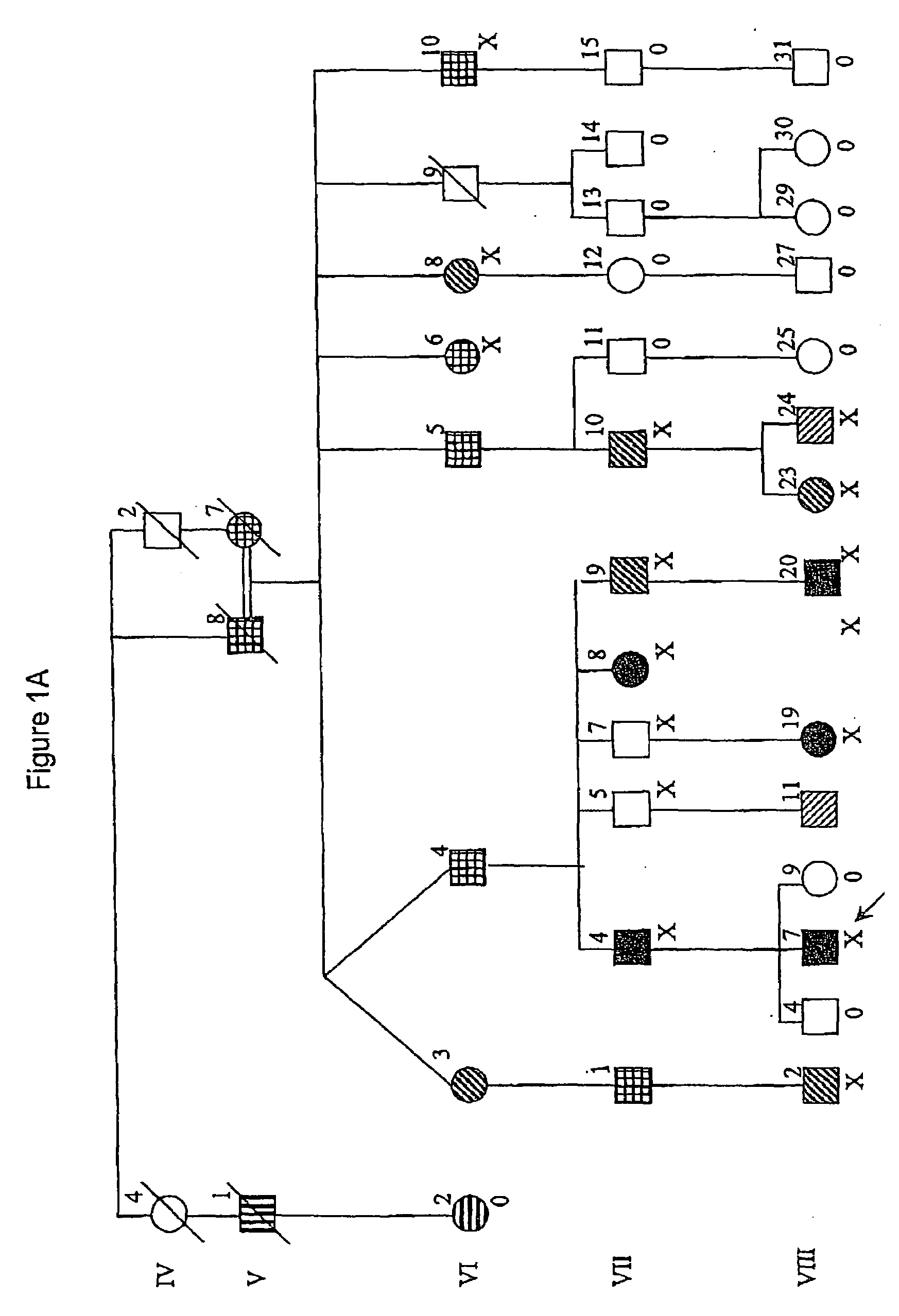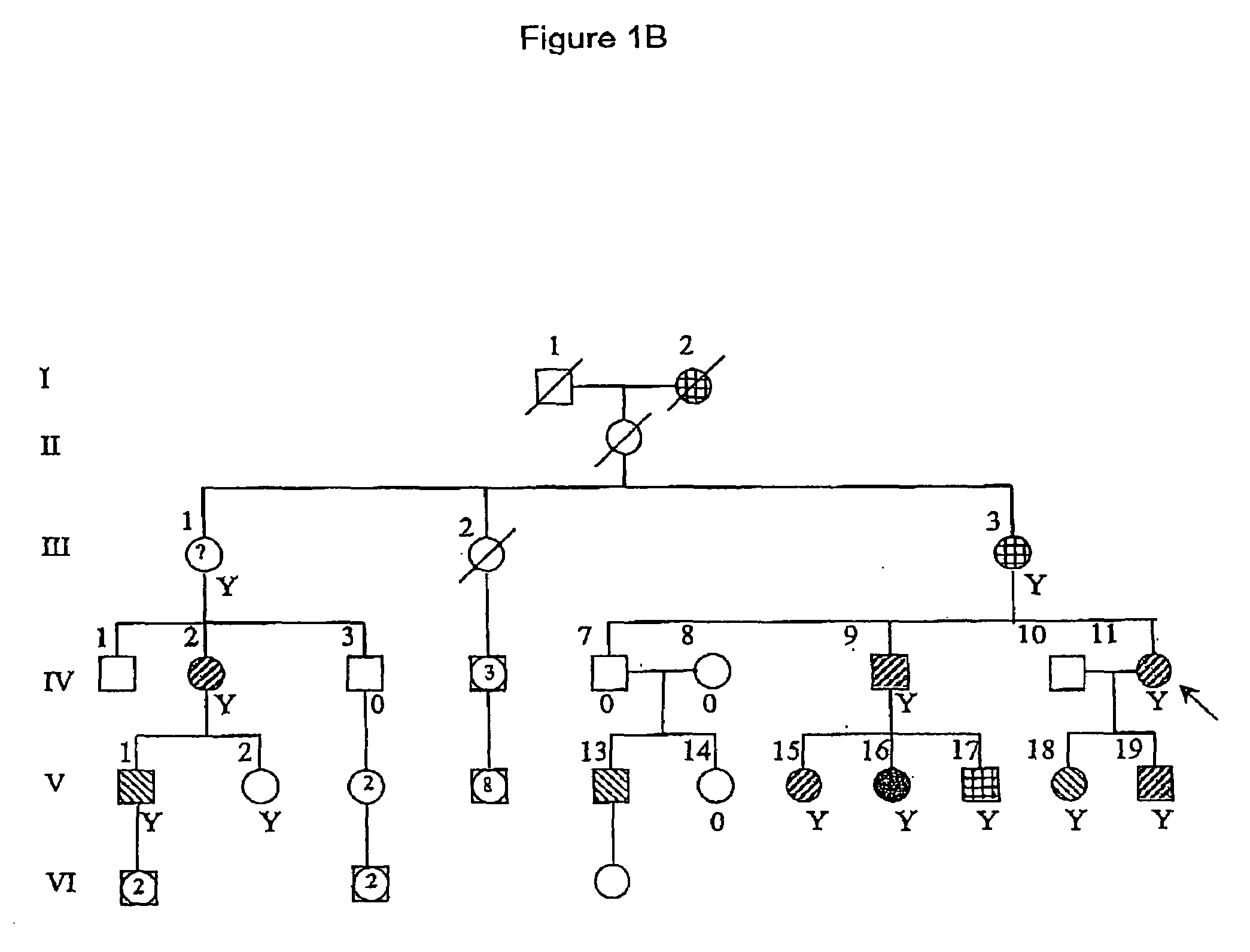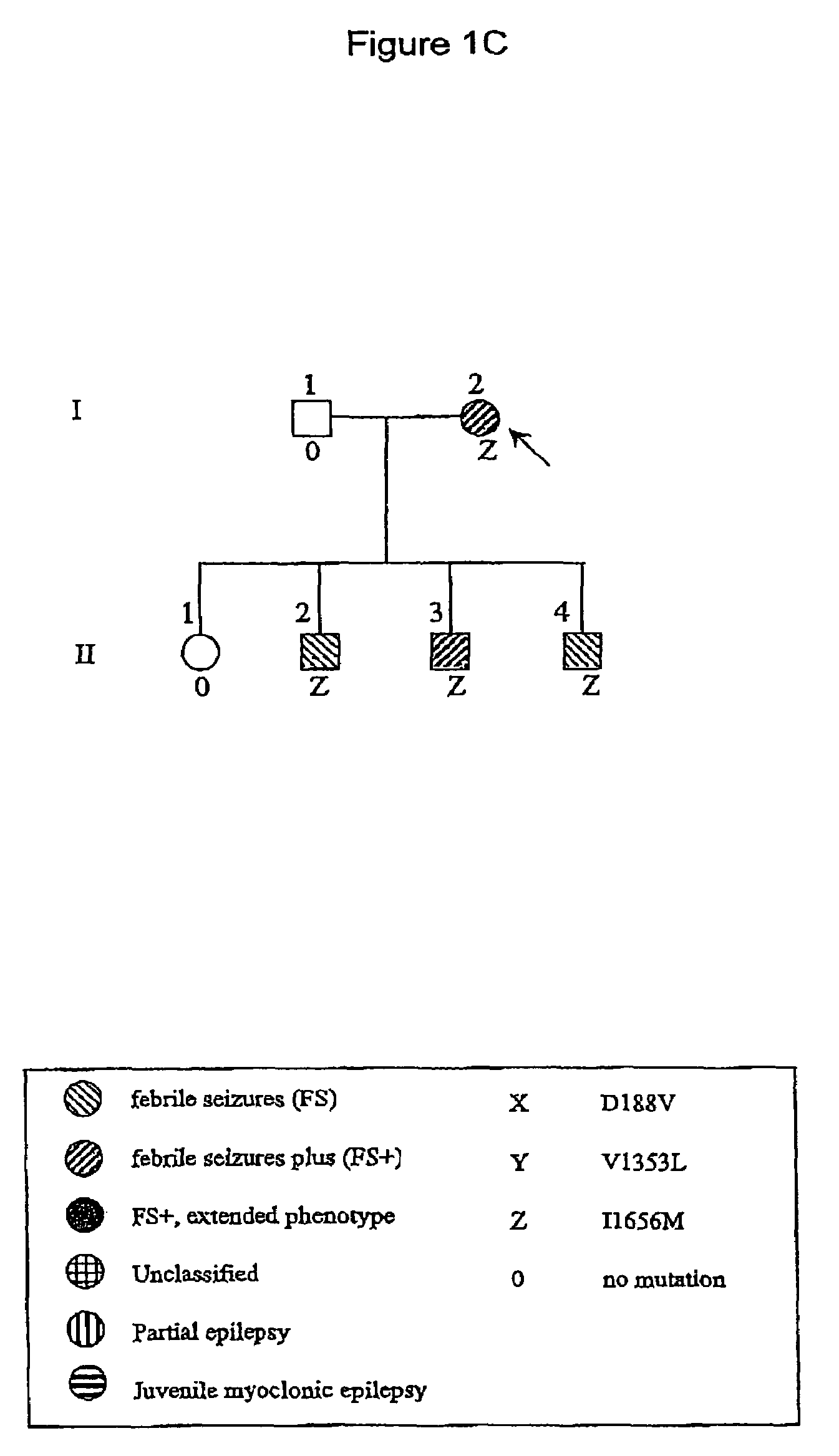Method of diagnosing epilepsy
a technology of epilepsy and diagnostic method, which is applied in the field of diagnosing epilepsy, can solve the problems of in vitro loss of function of 1 subunit, more depolarised membrane potential and hyperexcitability, and difficulty in initiating to recognise epilepsy as distinct, etc., and achieves rapid screening, shortening life span, and convenient handling
- Summary
- Abstract
- Description
- Claims
- Application Information
AI Technical Summary
Benefits of technology
Problems solved by technology
Method used
Image
Examples
example 1
Clinical Diagnosis of Affected Family Members
[0101]A group of 53 unrelated probands with GEFS+ phenotypes were studied. These subjects were ascertained on the basis of twin and family studies and on the basis of routine clinical practice. Phenotypes in probands and family members were classified as described elsewhere (Scheffer & Berkovic 1997; Singh et al 1999). Familial cases (n=36) were those in which at least one first-degree relative of the proband had a phenotype within the GEFS+ spectrum. Informed consent was obtained from all subjects.
[0102]The Australian family in FIG. 1A, which has been described extensively elsewhere (Scheffer & Berkovic, 1997; Lopes-Cendes et al, 2000), is the original pedigree leading to the initial delineation and description of the GEFS+ syndrome.
[0103]The Israeli family in FIG. 1B is of Ashkenazi origin and spans six generations. Twelve family members had seizures. In the two oldest members (I-2, III-3) seizures had occurred in childhood but the data...
example 2
Isolation and Sequencing of SCN1A Genomic Clones
[0105]At the commencement of this study the full-length sequence of the human SCN1A gene was not known. To determine this sequence a human BAC library obtained from Genome Systems was initially screened to identify human genomic sequence clones containing the SCN1A gene. The BAC filters were screened with a PCR product amplified with the primer pair 5′ AGATGACCAGAGTGAATATGTGACTAC 3′ (SEQ ID NO:13) and 5′ CCAATGGTAAAATAATAATGGCGT 3′ (SEQ ID NO:14) designed from the partial cDNA sequence of human SCN1A (Genbank Accession Number X65362).
[0106]The BAC filters were hybridised and washed according to manufacturers recommendations. Initially, membranes were individually pre-hybridised in large glass bottles for at least 2 hours in 20 ml of 6×SSC; 0.5% SDS; 5× Denhardt's; 100 ug / ml denatured salmon sperm DNA at 65° C. Overnight hybridisations with [α-32P]dCTP labelled probes were performed at 65° C. in 20 ml of a solution containing 6×SSC; 0.5...
example 3
Analysis of SCN1A for Mutations in Epilepsy
[0111]The determination of the genomic structure of SCN1A allowed the design of intronic primers (Table 2 and SEQ ID Numbers:15-88) to amplify each of the 27 exons of SCN1A in order to test for mutations in patients with generalised epilepsy with febrile seizures plus (GEFS+). A total of 53 unrelated patients (as described above) were screened by fluorescent single stranded conformation polymorphism (SSCP) analysis.
[0112]HEX-labelled primers were designed to amplify all exons of SCN1A (Table 2). A 30 ng sample of patient DNA was amplified in a total volume of 10 ul. Products were separated on non-denaturing 4% polyacrylamide gels containing 2% glycerol using the GelScan 2000 (Corbett Research). PCR products showing a conformational change were reamplified from 100 ng of genomic DNA with unlabelled primers and sequenced using the BigDye Terminator ready reaction kit (Perkin Elmer) according to manufacturers instructions.
[0113]A total of 53 u...
PUM
| Property | Measurement | Unit |
|---|---|---|
| total volume | aaaaa | aaaaa |
| concentration | aaaaa | aaaaa |
| concentration | aaaaa | aaaaa |
Abstract
Description
Claims
Application Information
 Login to View More
Login to View More - R&D
- Intellectual Property
- Life Sciences
- Materials
- Tech Scout
- Unparalleled Data Quality
- Higher Quality Content
- 60% Fewer Hallucinations
Browse by: Latest US Patents, China's latest patents, Technical Efficacy Thesaurus, Application Domain, Technology Topic, Popular Technical Reports.
© 2025 PatSnap. All rights reserved.Legal|Privacy policy|Modern Slavery Act Transparency Statement|Sitemap|About US| Contact US: help@patsnap.com



